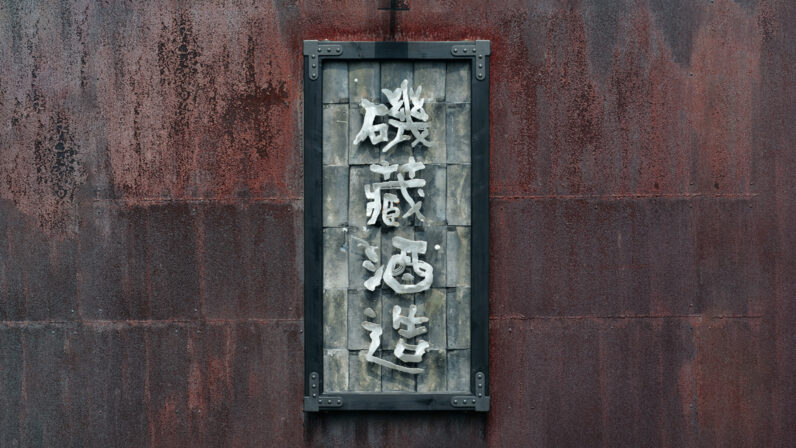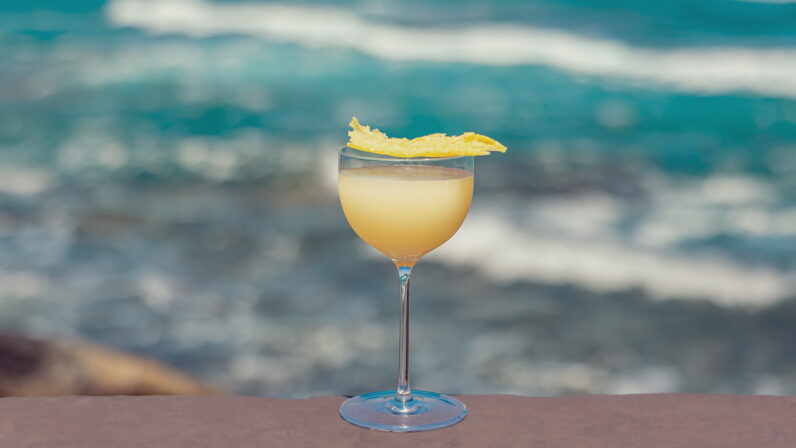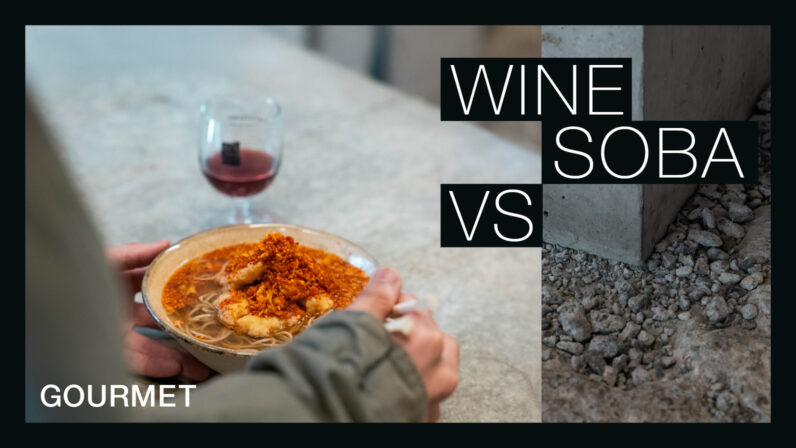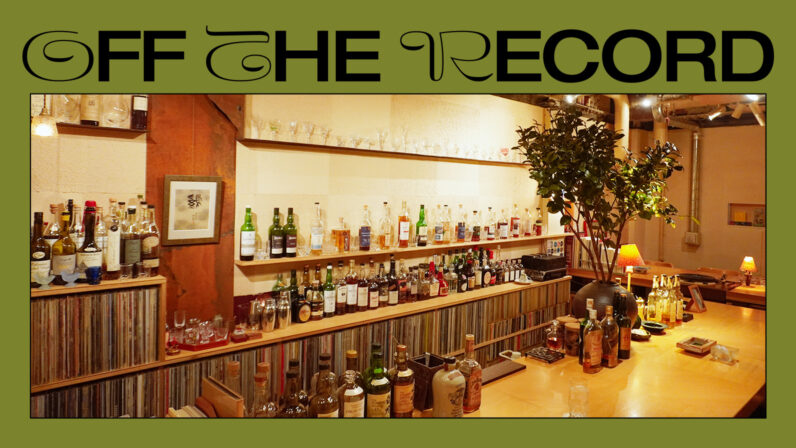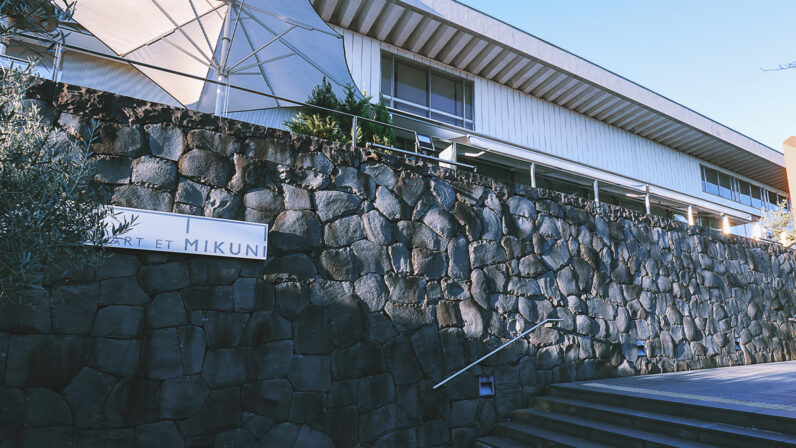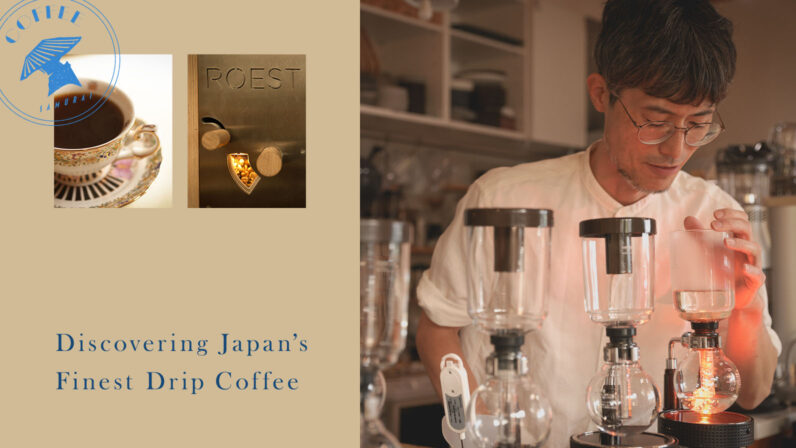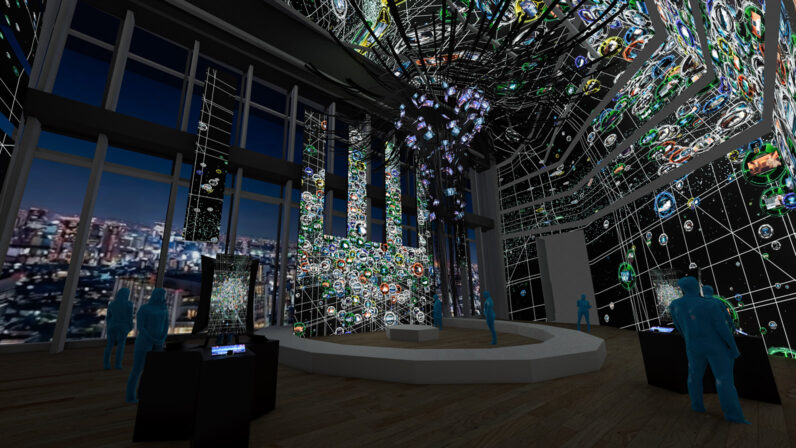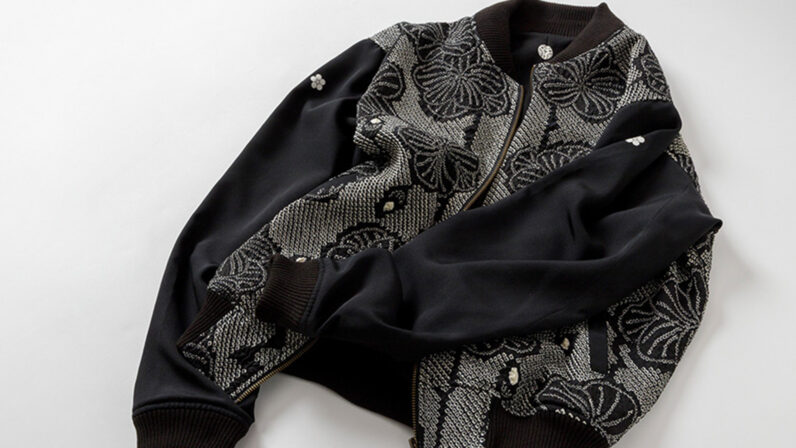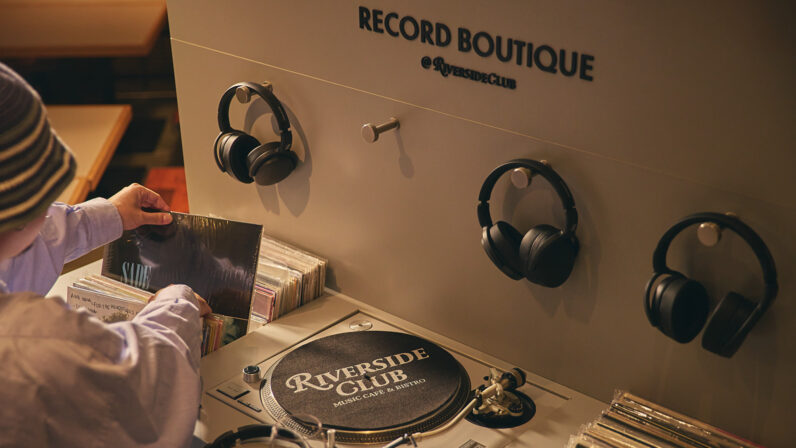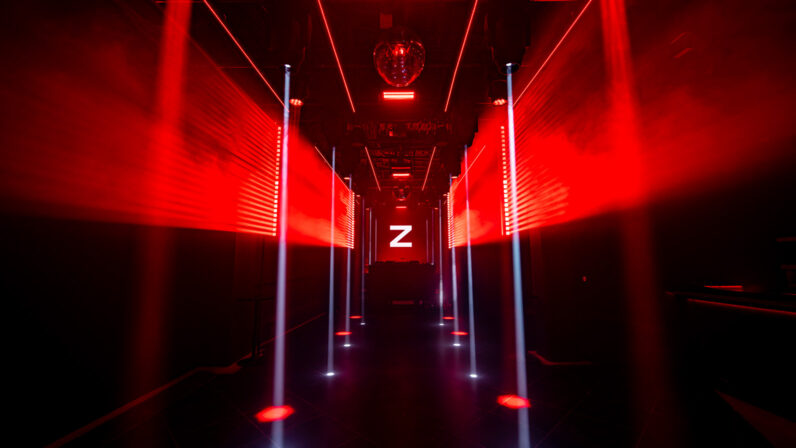Running from May 17 to July 13, 2025, Hakko (fermentation) Tourism Tokai is a regional event celebrating the rich world of fermented foods in the Tokai area. Part 1 of our coverage introduced the event’s concept, offered a glimpse of the main venue in Gifu, and shared highlights from one of its featured experiences: a sacred umami pilgrimage by bullet train with Hiraku Ogura, an unforgettable journey through a taste cosmos woven from wooden vats and aged sake. In Part 2, we visit two standout breweries from the tour, each a deeply memorable place with stories and flavors all its own.
Daruma Masamune: A Historic Brewery Crafting Exceptionally Aged Sake
First on the tour is ‘Daruma Masamune’ (Shiraki Tsunesuke Shoten), a historic sake brewery founded in 1835 during the late Edo period. A 20-minute drive upstream from Gifu, past Mount Kinka and Gifu Castle and across the Nagara River, brings you to this quiet spot surrounded by peaceful farmland.
The brewery was nearly leveled by the Nōbi Earthquake in 1891 but was reborn with a new name, Daruma Masamune, inspired by the daruma doll’s spirit of perseverance: fall down seven times, get up eight.
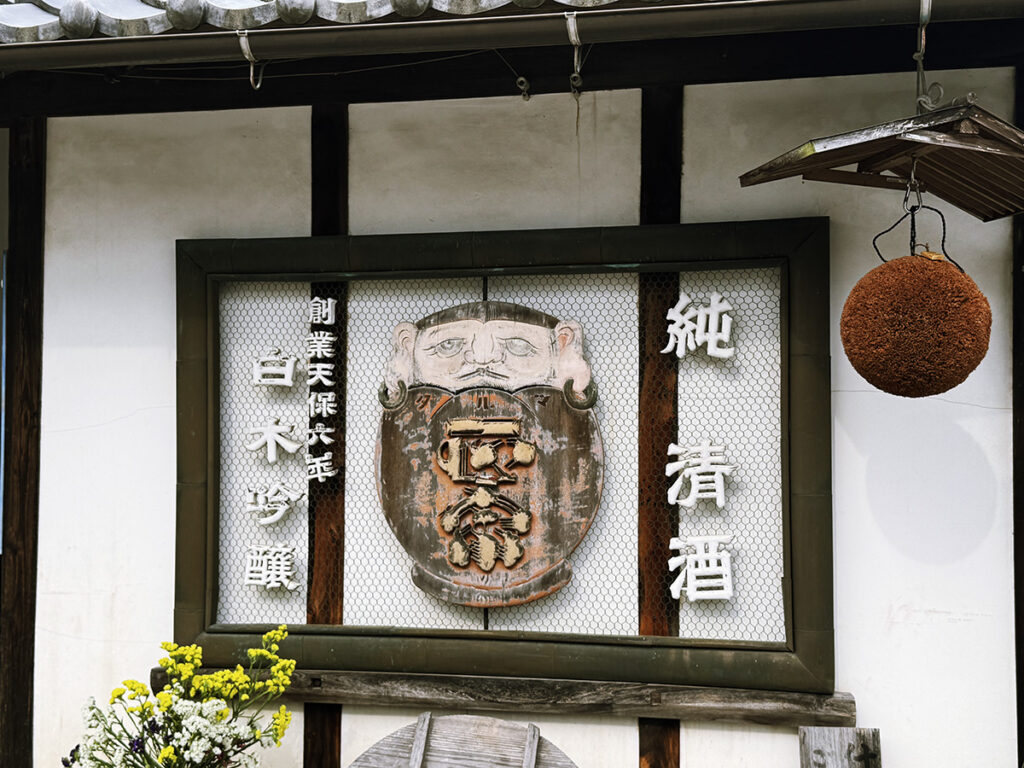
When you step inside the slightly cool brewery, you’ll see rows of sake aging tanks. Each one is labeled with the brewing year and accompanied by photos and notes about events from that time. These glimpses into history make exploring the brewery a truly enjoyable experience.
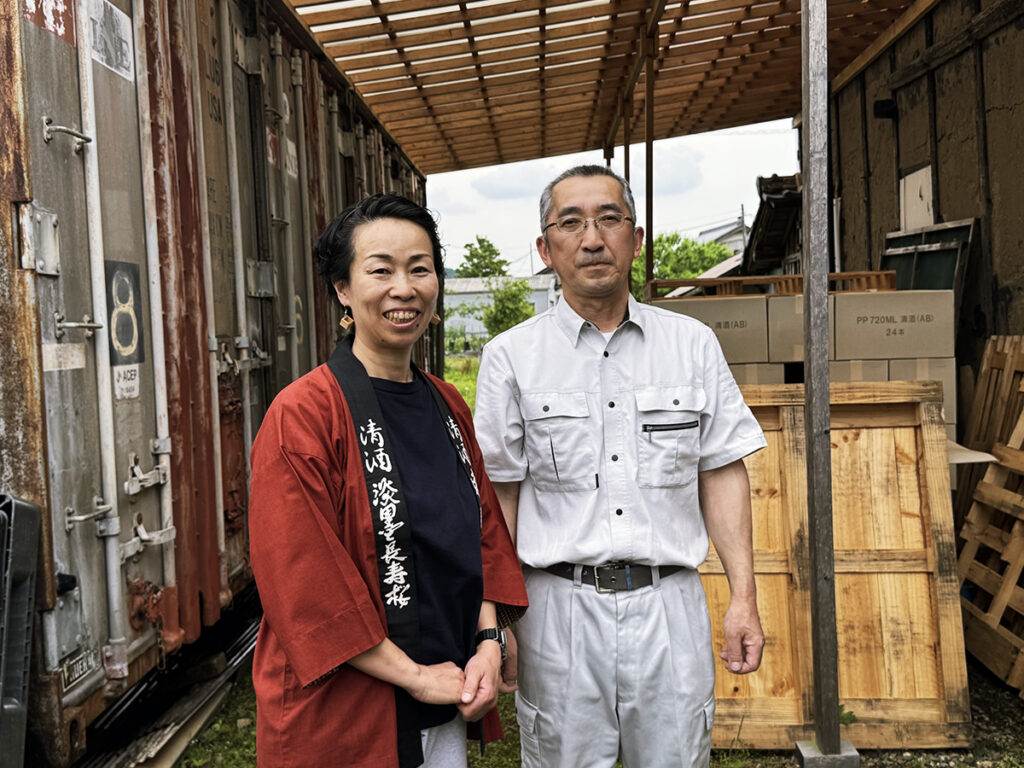
Shigeri Shiraki (left), the managing partner, and Hitoshi Shiraki (right), the seventh-generation master brewer. The containers in the back also hold aged sake.
One-of-a-Kind Aged Sake, Carefully Matured Over 50 Years
One of the brewery’s most unique features, rare even across Japan, is its focus on producing aged sake. Over 50 years ago, the sixth-generation owner happened to discover some forgotten bottles stored away in a corner of the brewery. When he opened one, he was surprised to find a beautifully clear, golden-colored sake with a rich and delicious flavor.
At that time, large sake producers were dominating the market, cheap sake filled supermarket shelves, and easy-to-drink ginjo sake was all the rage. Realizing they couldn’t compete by following the crowd, the owner decided to make aged sake their signature specialty.
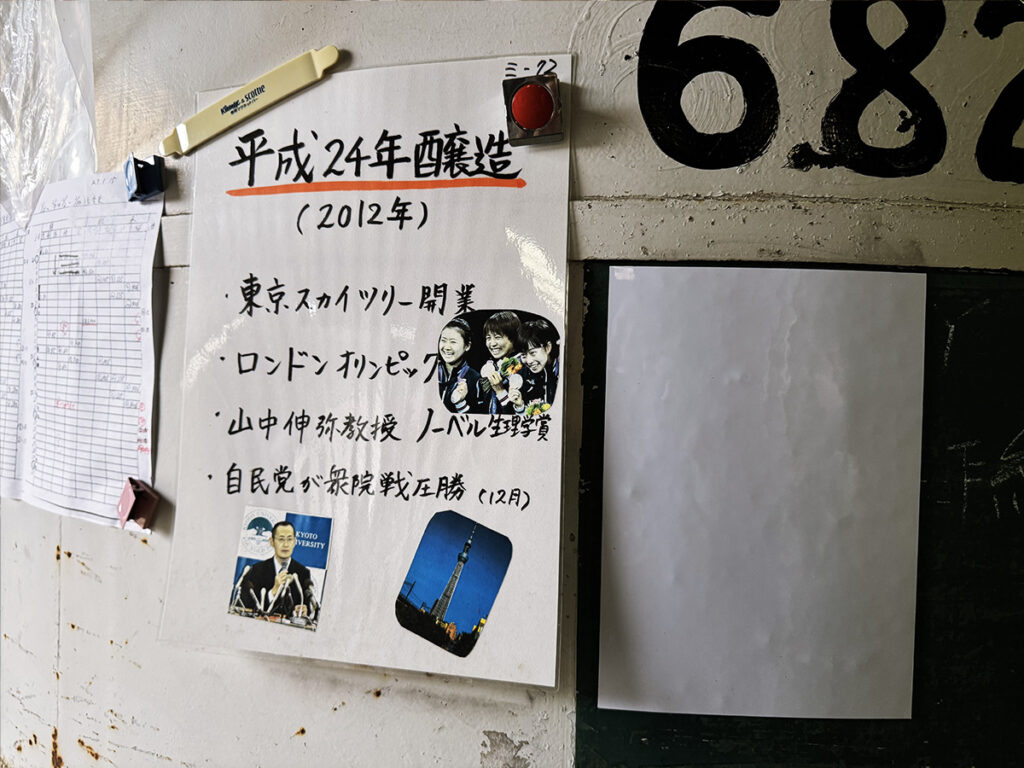
Each aging tank is marked with notable events from the year it was brewed.
In ancient Japan, aged sake was highly valued, but heavy liquor taxes introduced after the Meiji era caused this tradition to disappear. Fueled by a strong passion to bring back the culture of aged sake, Daruma Masamune’s brewers kept pushing forward even when their efforts were initially overlooked. Over time, their dedication paid off as the true quality of their aged sake gained recognition, winning numerous awards both in Japan and overseas. It’s even featured on the drink menu of JAL’s international first-class flights. Today, Daruma Masamune is widely regarded as the go-to name for aged sake.
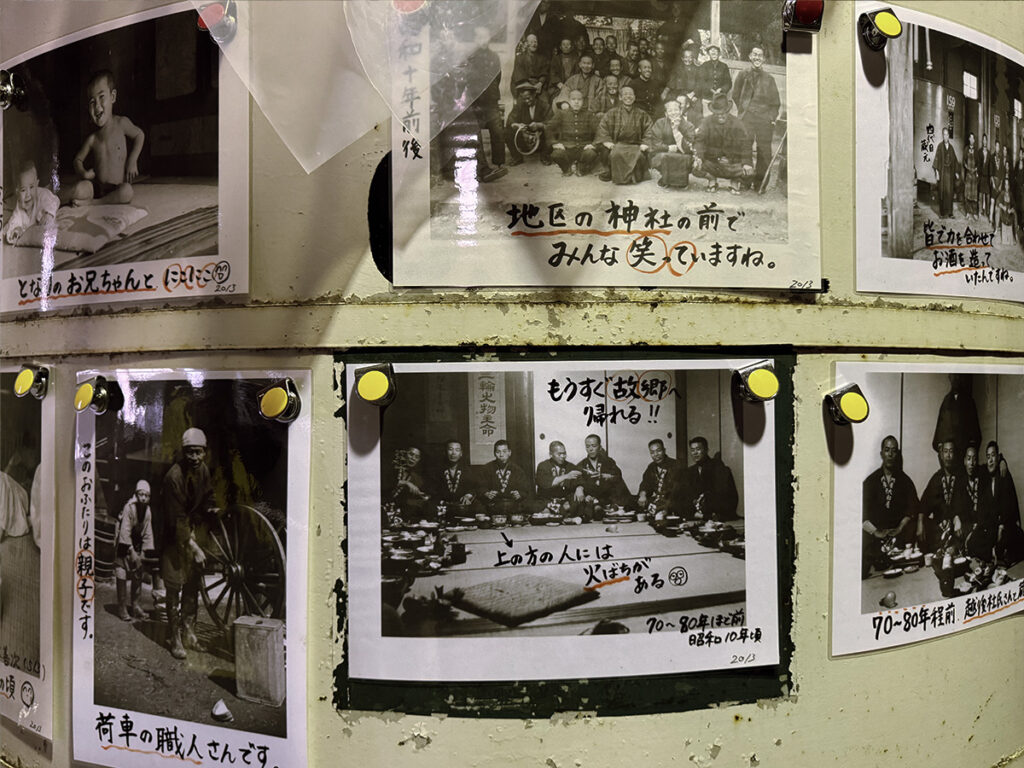
The aging tanks carry the stories of the family and the local community alongside the sake itself.
“No one else is making sake like this. It’s completely in a league of its own,” says tour producer Hiraku Ogura. “It goes against everything that’s trendy in sake right now. Fruity, clean ginjo-style sakes are easy to drink because they just go down so quickly. But Daruma Masamune’s aged sake is rich and full-bodied, and the umami lingers beautifully. It’s that long, smooth finish that really makes it unforgettable.”
A Brewing Method No Other Can Imitate
Daruma Masamune’s brewing method is a little different from the norm. Typically, sake is made using a three-stage brewing process. It starts with creating a yeast starter known as shubo, which is highly acidic, followed by three separate additions of koji, steamed rice, and water to build up the mash, or moromi. This is then fermented and pressed to produce the final sake. However, at Daruma Masamune, they go one step further by adding another round of shubo even after the standard process is complete.
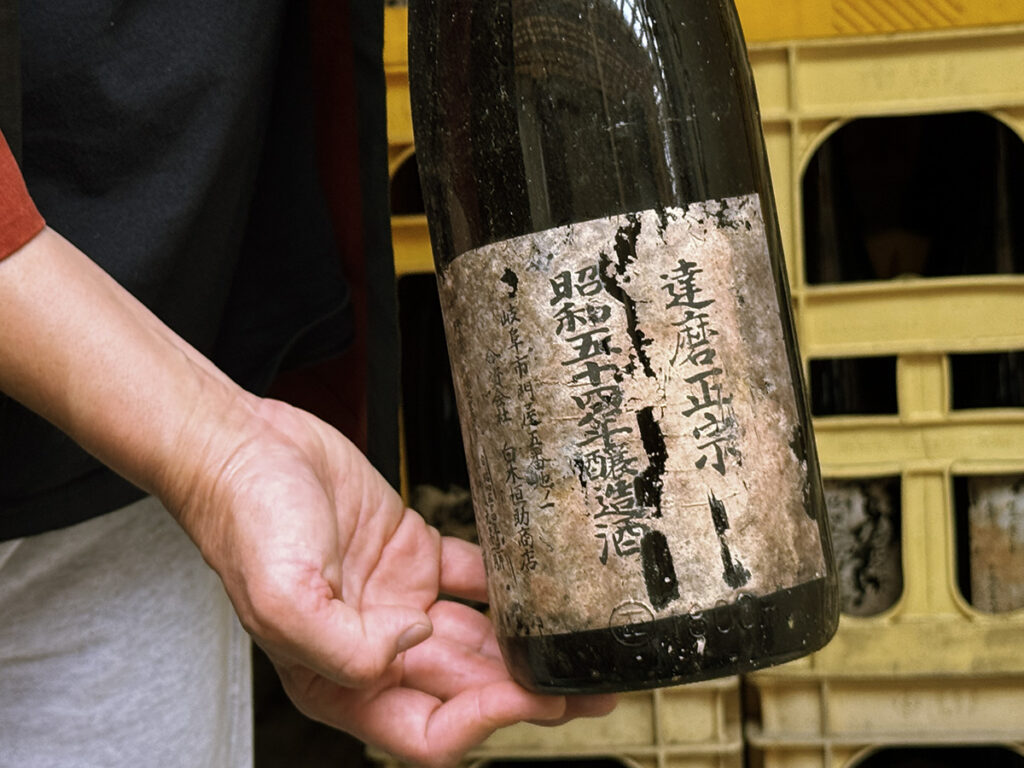
This sake was brewed in 1979. It spent 15 years aging in a tank before being transferred to 1.8-liter bottles known as isshobin, where it continues to mature.
Hiraku explains, “Normally, you’re not supposed to add acid at the end of sake brewing. The goal is usually to create a smooth sake without any lingering sourness. But here, they intentionally break that rule. From the very beginning, the sake is brewed to be richer and sweeter than usual. Adding acid at the end creates an incredible balance between acidity and umami. It’s truly a remarkable technique.”
This sake has a robust body that can handle long aging. It’s specially crafted with extended maturation in mind. The brewery spent a full decade refining this unique brewing method through repeated experiments and research.
Tasting by Vintage, Just Like Wine or Brandy
After the brewery tour, it was finally time for the tasting. We tried four kinds of sake: aged sake matured for 5, 10, and 20 years, along with a special fresh genshu (undilited sake) pressed just this March. Starting with the fresh sake, you can’t help but imagine how it will develop and deepen over the years. It’s an experience that creates a sense of excitement and wonder.
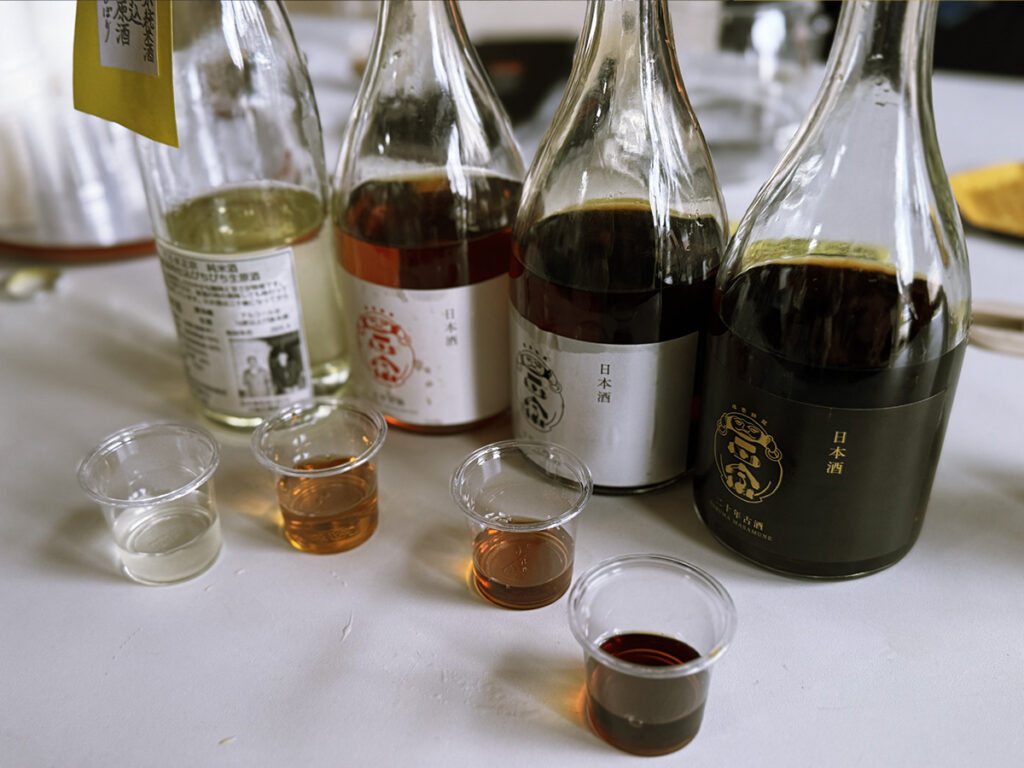
From left to right, we tasted fresh genshu followed by aged sake aged 5, 10, and 20 years.
As the sake ages from 5 to 10 to 20 years, its color deepens and its flavor grows richer and more complex. By 20 years, it develops a thick, syrupy texture with a full-bodied richness that feels like enjoying a fine vintage brandy. It pairs wonderfully with cheese, chocolate, and dried fruits. While some prefer the milder, smoother taste of the 5-year aged sake, everyone will find something surprising and impressive. This sake goes beyond the usual expectations and opens the door to a whole new world. The magic of fermentation and aging is just captivating.
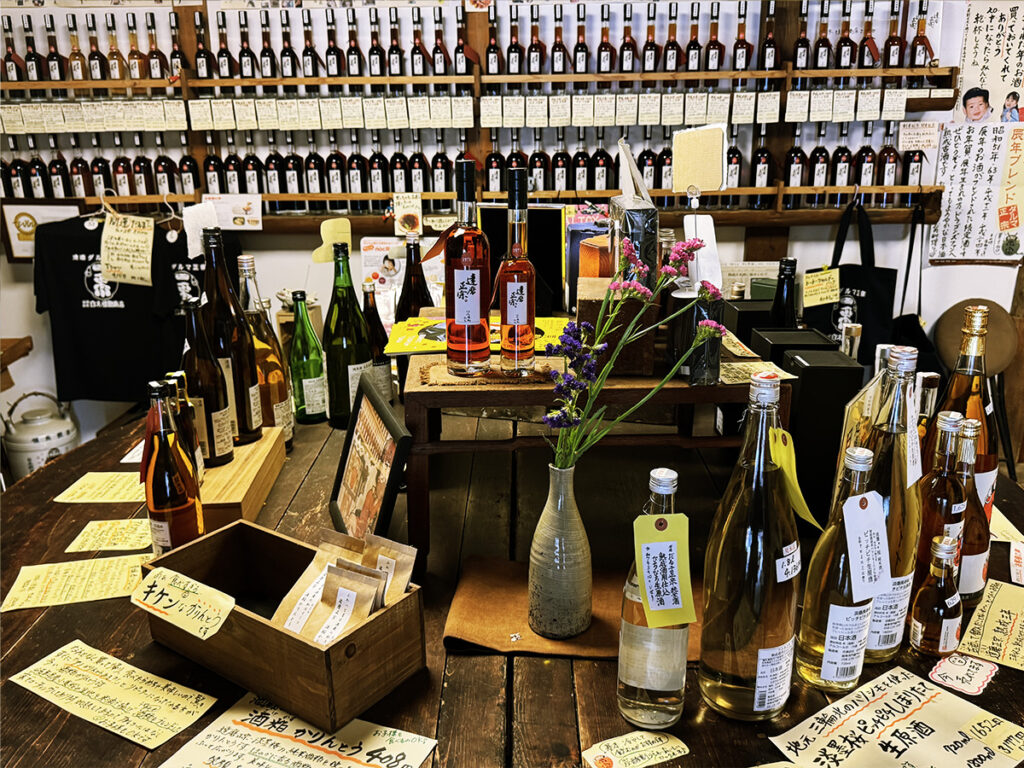
The shop features a selection of aged sake from different years.
Our final stop was the shop on the brewery grounds, where vintage bottles of aged sake from across the years lined the walls. The space felt like a hidden treasure trove, full of charm and discovery. Finding a bottle from your own birth year, a loved one’s, or a meaningful anniversary is all part of the fun. Some vintages are also available in compact 50ml bottles, perfect for tasting and comparing across years. These one-of-a-kind sakes offer an experience you won’t find anywhere else and are well worth seeking out.
Daruma Masamune (Shiraki Tsunesuke Shoten)
Address: 61 Kadoya-Kado, Gifu City, Gifu Prefecture 501-2528
Shop Hours: 9:30 AM – 4:30 PM (Closed on Sundays and national holidays)
Website: https://www.daruma-masamune.co.jp/
Instagram: @shigeri_shiraki
YouTube: @daruma-masamune1835
※ Brewery tours require advance reservation.
Yamakawa Jozo: A Brewery Crafting Tamari Soy Sauce, Fermented Exclusively in Wooden Barrels
Our next stop was Yamakawa Jozo, a brewery dedicated to producing tamari soy sauce. Just a short 20-minute drive from Gifu Station and right across the Nagara River, it’s an easy and worthwhile visit for travelers. As soon as you step inside, the rich aroma of soy sauce fills the air and instantly whets your appetite. The rows of massive, weathered wooden barrels make a striking impression. With around 100 barrels in use, it’s one of the few soy sauce breweries in Japan still producing tamari entirely in wooden casks.
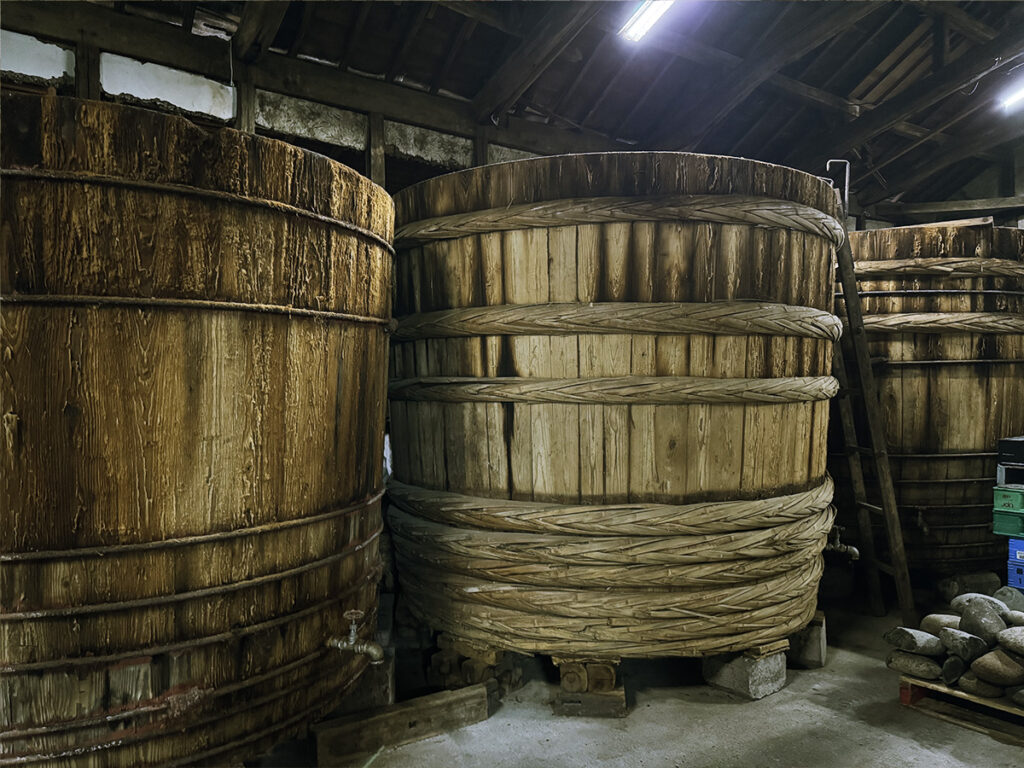
Lined up in neat rows, the wooden barrels date back to the Meiji and Taisho periods, with a few even tracing their origins to the Edo era.
Everything made here is tamari soy sauce. “Most soy sauces are about half soybeans and half wheat, but tamari is made using only soybeans,” explains Akio Yamakawa, the brewery’s third-generation head.
“The beans are steamed, inoculated with koji mold, and turned into soybean koji. This is then mixed with salt water and placed into wooden barrels, creating what’s known as shoyu moromi, or soy sauce mash. While typical soy sauce uses a ratio of about 10 parts koji to 15 parts salt water, tamari uses much less liquid, around 10 parts koji to just 5 parts salt water. A cloth is laid over the top of the mash and weighed down with heavy stones. If you peek into the barrel, it might even look a bit like miso,”
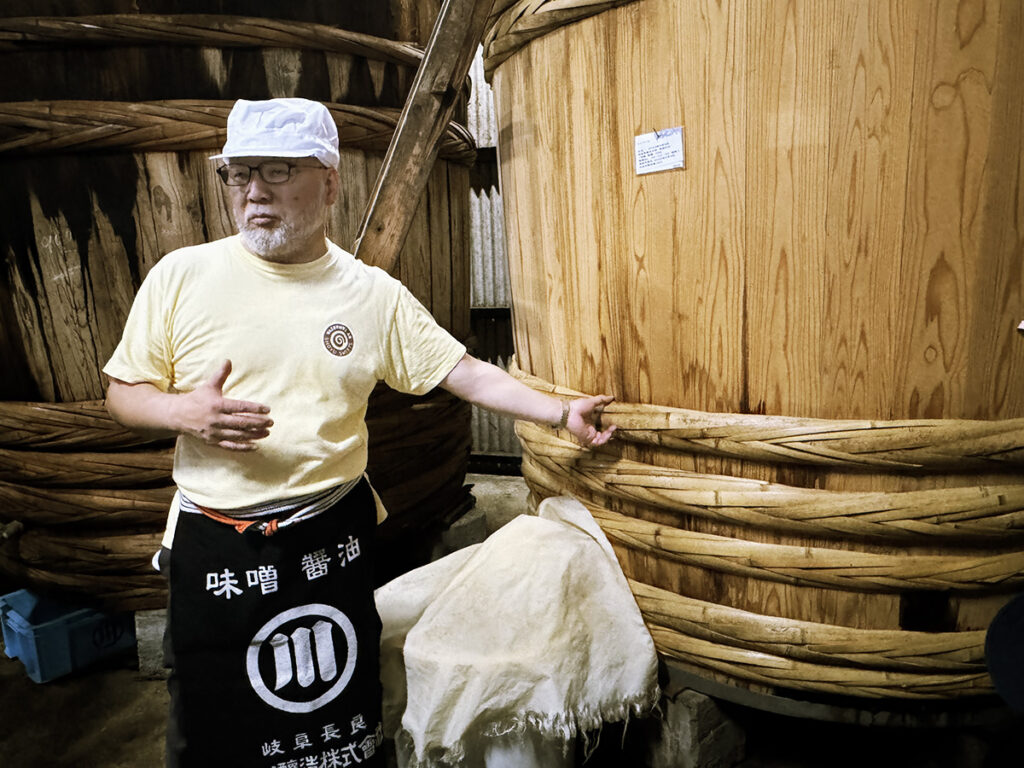
Akio Yamakawa, the third-generation owner of Yamakawa Jozo, shares insights about the brewery.
To ensure even fermentation, stirring is necessary. However, because the mash is hard and contains little moisture, a special method is used. A unique tool called an entotsu (chimney) is placed in the center of the barrel before adding the mash. The entotsu has holes near its base, allowing moisture to collect inside. Once a week, this moisture is scooped out with a large ladle and poured back over the top to circulate it. Tamari soy sauce is carefully aged over two years, with this process repeated every week throughout the maturation period.
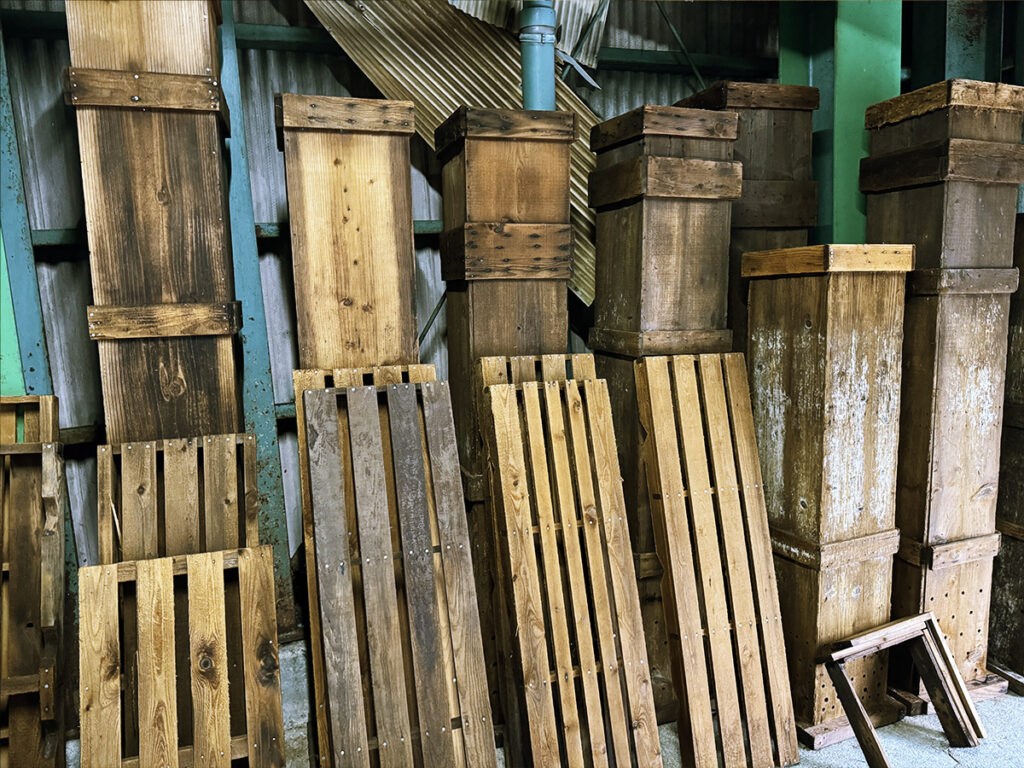
Inside the brewery, rows of tools called entotsu stood in a line. Each one had small holes near the base.
At the bottom of each wooden barrel is a spigot. When turned, soy sauce flows out from inside. First, the liquid slowly drains over about six months. After the moisture is removed, the thick moromi (fermented mash) left in the barrel is manually dug out, sliced thinly, and then pressed in a hydraulic press to extract every last drop of soy sauce remaining in the mash. This is a very traditional method and requires hard, skilled labor. The entire process, from start to finish, takes at least two and a half years.
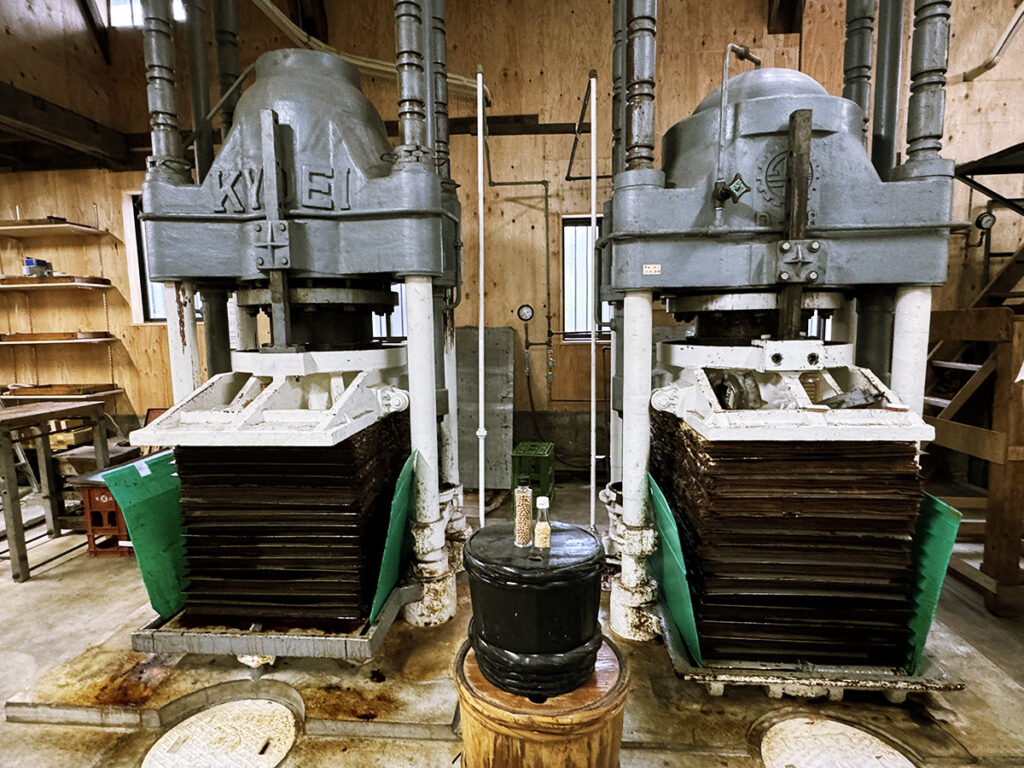
The soy sauce being pressed with a hydraulic press. The freshly pressed soy sauce has a vibrant, fresh flavor that truly stands out.
A Flavor Only Wooden Barrels Can Create
Yamakawa Brewing’s secret to their soy sauce lies in their wooden barrels. Unlike stainless steel tanks, these barrels have countless tiny pores that provide a natural home for yeast, lactic acid bacteria, and other microorganisms. Over many years of brewing, this unique environment develops the rich flavors that define their soy sauce.
“About 25 years ago, we experimented with plastic tanks, but the flavor was completely different. The depth of umami was missing. There’s no doubt that the distinctive taste comes only from using wooden barrels,” says Akio Yamakawa.
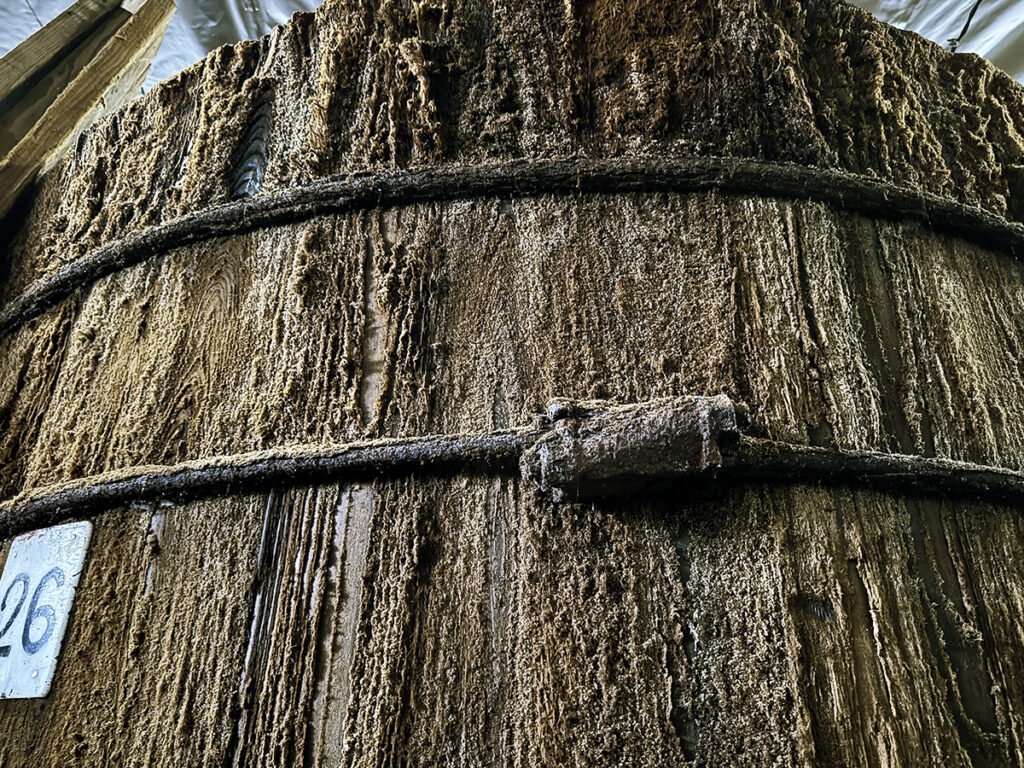
Well-aged wooden barrels are full of life, harboring a rich community of natural microorganisms.
Wooden barrels can last around 150 – 200 years, but when the last cooperage announced their closing ten years ago, breweries using these barrels faced a serious crisis. In response, Yamaroku Soy Sauce Brewery on Shodoshima Island apprenticed under master barrel makers to preserve the craft, starting the Wooden Barrel Craftsmen Revival Project. Since then, the number of skilled craftsmen has steadily grown, and the project has expanded greatly. They are now passionately promoting the unique quality of naturally brewed products made in wooden barrels throughout Japan.
Gluten-Free Tamari Soy Sauce
Tamari soy sauce is mostly made in the Tokai region, but crafting it using traditional methods is no easy task. During Japan’s rapid economic growth, big companies started mass-producing inexpensive soy sauce, which led many small, family-run breweries that made tamari for home use to close down. To survive, Yamakawa Brewery shifted its focus to supplying restaurants and other commercial clients. The whole team brainstormed ideas and developed not only traditional tamari soy sauce but also over 50 new and unique products.

Peeking into the shop beside the brewery, a wide variety of soy sauce products are on display.
Tamari soy sauce, made entirely from soybeans, is prized for its deep color and rich, thick umami flavor. Although its dark hue might suggest a strong saltiness, aging it for two years softens the sharpness, creating a smooth and complex taste. It pairs beautifully not just with sashimi but also with meats and vegetables, and it’s versatile enough for use beyond Japanese cuisine. Because it contains no wheat, tamari has recently gained popularity overseas as a gluten-free option.
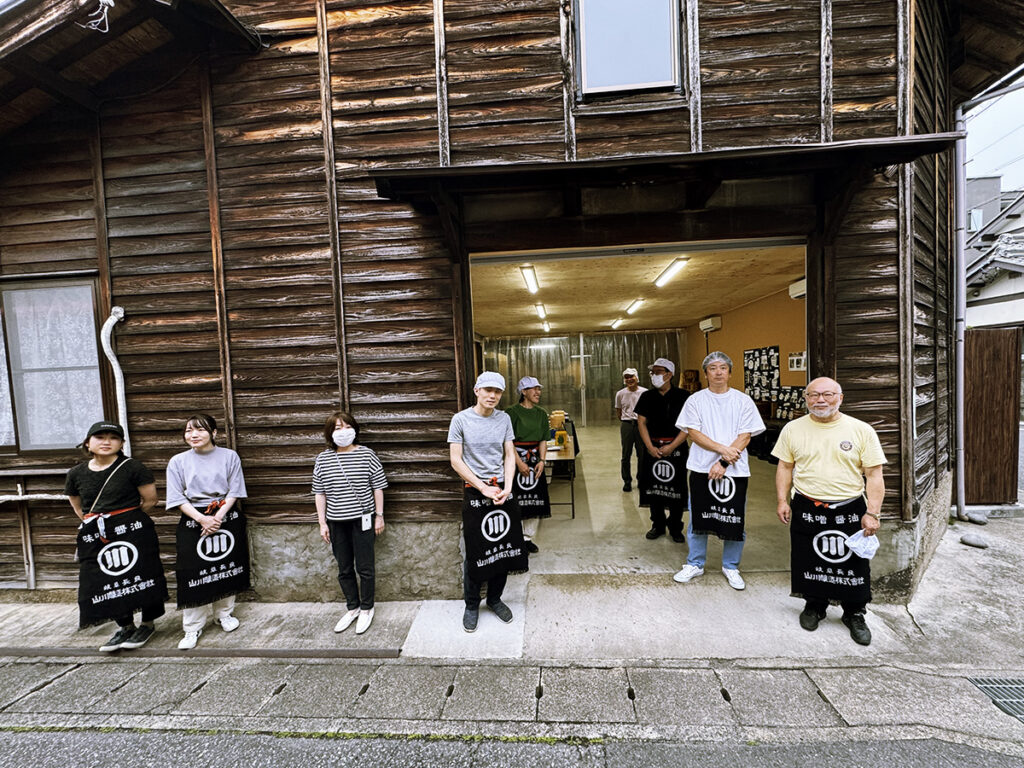
The entire team at Yamakawa Brewing gathered to send us off.
Tamariya Yamakawa Jozo Co., Ltd.
Address: 1-9 Nagara Aoi-machi, Gifu City, Gifu Prefecture 502-0047
Shop Hours: 8:00 AM – 6:00 PM (Closed on Sundays, national holidays, and the 2nd and 4th Saturdays)
Website: https://tamariya.com/
Instagram: @tamariya_gifu
※ Brewery tours require advance reservation.
Visiting these two passionate and authentic breweries gave us a deeper understanding and appreciation of fermentation, and the role it plays in tradition, cuisine, and culture. Next, we headed to the Nagara River to watch traditional cormorant fishing while enjoying Gifu sake and a fermented ayu fish bento. It was a truly immersive and delightful experience. This was just one part of an extensive program with over 100 events still to explore. Hakko Tourism Tokai offers a unique chance to dive into the rich history and food culture of the Tokai region, with fermentation as the centerpiece. It’s definitely an extraordinary experience worth trying.
Hakko Tourism Tokai 2025
https://tokaihakko.net/
Event Period: May 17, 2025 (Saturday) – July 13, 2025 (Sunday)
Main Venues:
・Gifu: Minna no Mori Gifu Media Cosmos (Gifu City, Gifu Prefecture)
・Aichi: MIZKAN MUSEUM (Handa City, Aichi Prefecture)
・Mie: VISON (Taki Town, Taki District, Mie Prefecture)
Program Experience Venues:
Breweries and restaurants producing fermented foods and alcoholic beverages across the three Tokai prefectures and more.
■Related Article


